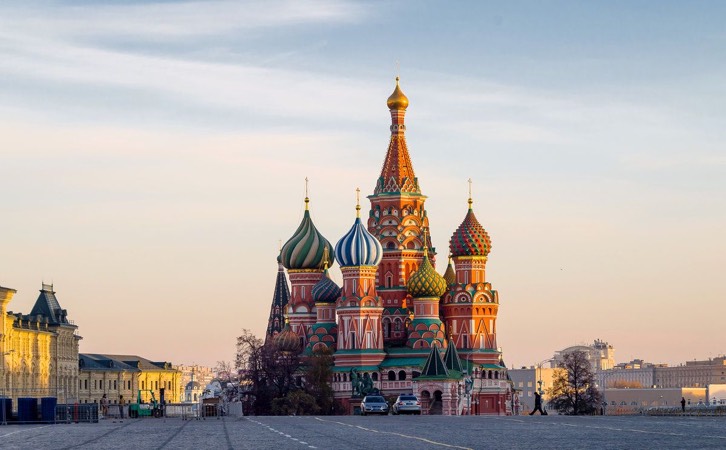Saint Basil's Cathedral
The real name of the temple is the Cathedral of the Intercession of the Most Holy Theotokos, which is on the Moat, but it is popularly known as St. Basil's Cathedral. There are several legends about the creators of the cathedral: according to one of them, the cathedral was built by Postnik Yakovlev, a master from Pskov; according to another, the building had two architects — Postnik and Barma. And according to the third version, the architect was generally an unknown Italian master, who in a bizarre way combined the canons of Russian and Western European architecture.
The cathedral was created by order of Ivan the Terrible as a memory of the capture of Kazan in 1555—1561. Legend has it that when the king saw the final result, he was so amazed by the beauty of the cathedral that he ordered the master to be blinded so that he could no longer create anything as beautiful.
The cathedral is unique in its architecture: it consists of nine independent columnar churches, each of which is named after the holidays that occurred during the decisive battles in Kazan. All of them are united inside by a common base and a bypass gallery. The cathedral is also remarkable for its interior decoration: it has preserved icon painting and monumental paintings of the 16th century, which can be traced back more than four centuries of the development of Russian icon painting art.
Interestingly, the craftsmen chose brick as the material for the construction of St. Basil's Cathedral, which is quite a rarity for the 16th century. This was a bold innovative decision, as at that time much more traditional materials were used for the construction of such buildings — hewn stone or plinth. The main distinguishing feature of the architectural masterpiece is that its design does not provide for a definite facade at all, in other words, from which side you approach the cathedral, it seems that this is the main side.
The height of the church is about 65 meters, so for many years this building was considered to be the tallest in Moscow. Throughout its centuries-old history, the cathedral has been repainted and restored many times, and with the arrival of the Bolsheviks, it miraculously escaped the sad fate of many other temples and churches — complete destruction, such as Soviet ideology demanded.
Currently, it houses a branch of the State Historical Museum, the exposition of which presents the history of the construction and existence of the cathedral, and temporary exhibitions dedicated to one or another historical era in Russia. Since 1991, Orthodox services have also been held in the church.
Address
pl. Krasnaya
Address
pl. Krasnaya
Address
pl. Krasnaya
Timetable
daily 11:00am — 6:00pm
Timetable
daily 11:00am — 6:00pm
Timetable
daily 11:00am — 6:00pm
Phone
+7 495 698-33-04
Phone
+7 495 698-33-04
Phone
+7 495 698-33-04
Website
Saint Basil's Cathedral
Website
Saint Basil's Cathedral
Website
Saint Basil's Cathedral
Source
https://kudago.com/msk/place/sobor-vasiliya-blazhennogo/
Source
https://kudago.com/msk/place/sobor-vasiliya-blazhennogo/
Source
https://kudago.com/msk/place/sobor-vasiliya-blazhennogo/


